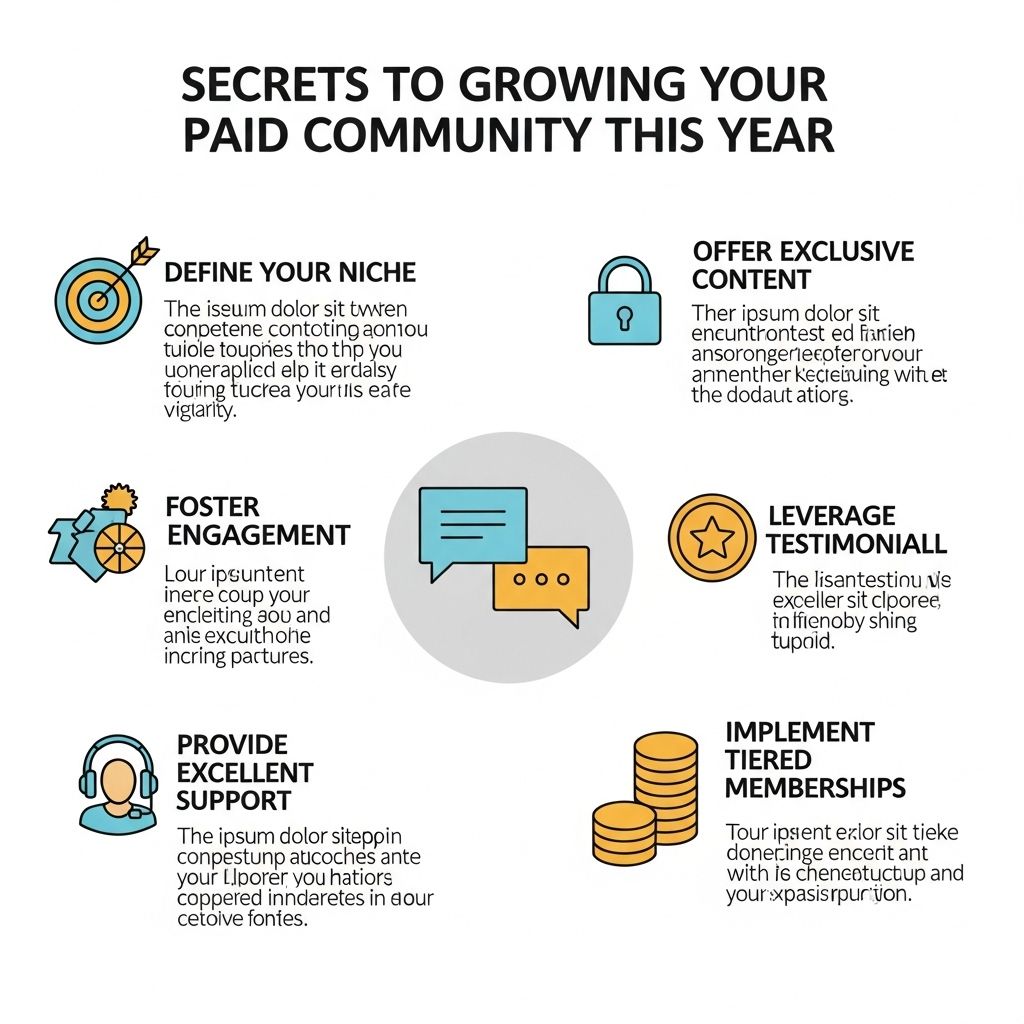As the digital landscape evolves, the concept of paid communities is gaining traction among creators, entrepreneurs, and brands. Many are discovering that building a robust, engaged community can lead to sustained income, professional growth, and valuable networking opportunities. But how can you ensure your paid community flourishes? This article dives into strategies, tools, and best practices that can help you scale your paid community successfully in 2023.
Table of Contents
Understanding Your Target Audience
The first step in growing your paid community is having a clear understanding of who you want to attract. Here’s how to define your target audience:
- Demographics: Age, location, gender, and occupation can steer the type of content you create and the community culture.
- Interests: Identify shared interests or pain points that your community can address.
- Engagement Preferences: Knowing how your audience prefers to engage (e.g., forums, live chats, or webinars) can shape your community’s structure.
Creating Compelling Value Propositions
When potential members consider joining your paid community, they want to know what’s in it for them. A compelling value proposition can make all the difference. Here’s how to craft one:
- Identify Unique Offerings: What can you provide that others don’t? This could be exclusive content, mentorship, or networking opportunities.
- Use Testimonials: Showcase success stories from existing members to demonstrate the value of your community.
- Highlight Benefits: Explain how being a member will solve a problem or enhance their skills.
Choosing the Right Platform
The platform you choose for your community can significantly impact its success. Here are some popular options:
| Platform | Best For | Cost |
|---|---|---|
| Discord | Gaming & Tech Communities | Free with premium features |
| Patreon | Creators & Artists | Commission-based |
| Circle.so | Professional Networks | Subscription model |
| Facebook Groups | General Interest Communities | Free |
Each platform comes with its unique set of features, integrations, and audience types. Choose one that aligns with your community’s goals and user preferences.
Content is King
To keep your community engaged, consistent and valuable content is crucial. Here are effective content strategies:
Content Types
- Live Workshops: Interactive sessions that allow members to ask questions.
- Exclusive Articles: In-depth guides or articles tailored to your community’s interests.
- Video Tutorials: Visual content that simplifies complex topics.
- Discussion Threads: Facilitate conversations on relevant topics.
Scheduling and Frequency
Establish a content calendar to maintain consistency. Consider the following:
- Weekly or bi-weekly workshops
- Monthly newsletters summarizing discussions and key takeaways
- Regular polls for members to suggest content topics
Fostering Community Engagement
Creating a vibrant community involves more than just posting content; it requires active participation. Here are some tactics to foster engagement:
- Encourage Member Introductions: Create a space for new members to introduce themselves, share their goals, and connect.
- Host Regular Events: From AMAs (Ask Me Anything) to themed discussions, keep the community lively and interactive.
- Recognize Contributions: Acknowledge and reward active members through shoutouts or exclusive perks.
Marketing Your Community
Once your community is set up, it’s time to promote it. Here are some effective marketing strategies:
Utilizing Social Media
- Leverage Influencers: Collaborate with influencers in your niche to reach a broader audience.
- Engagement Campaigns: Create engaging posts that encourage sharing your community’s benefits.
Email Marketing
Build an email list and send regular updates about your community, special offers, and valuable content. Consider these tips:
- Segment your list based on interests or engagement levels.
- Personalize emails to make potential members feel valued.
Measuring Success
Tracking the success of your paid community is essential for growth. Here are some metrics to monitor:
- Member Growth: Track how many new members join every month.
- Engagement Rates: Assess the level of participation in discussions and events.
- Churn Rate: Keep an eye on how many members leave your community.
Use tools like Google Analytics or community management software to gather insights and adjust your strategies accordingly.
Iterating and Adapting
The digital landscape is constantly changing, and so should your community strategies. Stay open to feedback and iterate based on what resonates with your members. Some ways to adapt include:
- Conducting member surveys to gather opinions and suggestions.
- Testing new content formats and engagement strategies.
- Staying informed about industry trends to integrate relevant topics.
Conclusion
Growing a paid community requires a blend of understanding your audience, delivering value, fostering engagement, and continuously evolving. By implementing these strategies, you can build a thriving community that not only provides revenue but also fosters connections and shared learning experiences. Remember, the success of your community will largely depend on the relationships you build and the value you provide to your members. Start today, and watch your paid community flourish!
FAQ
What are the best strategies for growing a paid community?
To grow a paid community, focus on providing exclusive content, engaging members through regular interactions, and leveraging social proof by showcasing testimonials and success stories.
How can I effectively market my paid community?
Utilize social media marketing, content marketing, and collaborations with influencers in your niche to promote your paid community and attract new members.
What type of content should I offer in my paid community?
Offer a mix of premium resources, such as webinars, e-books, expert Q&A sessions, and networking opportunities, to provide value to your members.
How can I retain members in my paid community?
Regularly update your content, listen to member feedback, and create a sense of belonging through community events and personalized communication to enhance member retention.
What platforms are best for hosting a paid community?
Consider platforms like Patreon, Discord, or specialized membership sites that allow for easy content sharing and community engagement.

